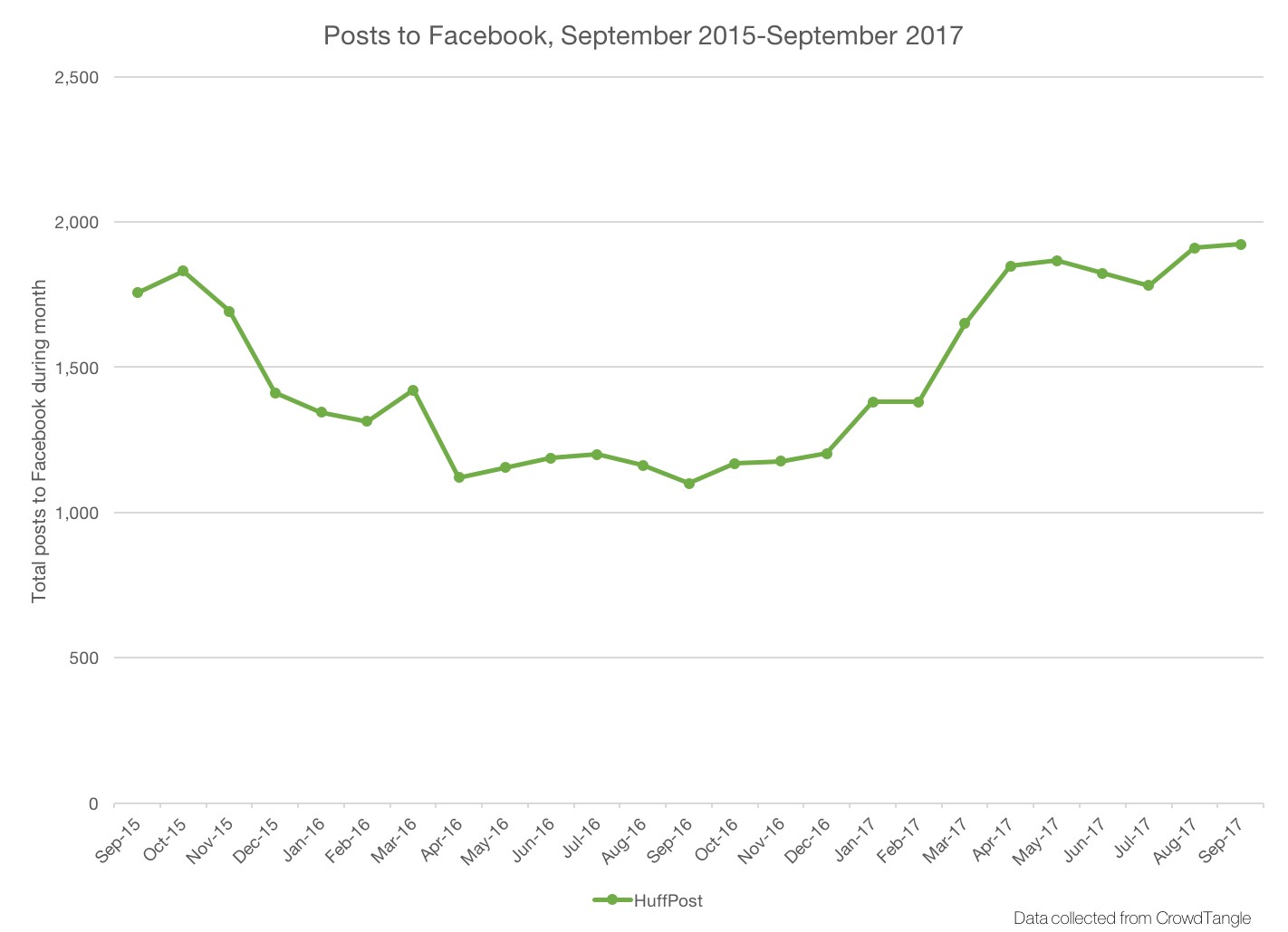Sign up for The Media Today, CJR’s daily newsletter.
Digiday published a story last week suggesting that many major publishers are shifting away from Facebook toward other social platforms to distribute their work. “Facebook loses attention as publishers shift focus to other platforms,” the headline announced.
But if publishers are really going cold on Facebook, they have a funny way of showing it. Let’s take CNN, which Digiday reported was “de-emphasizing Facebook” in favor of other platforms.
Far from showing signs of de-emphasizing Facebook, this was the sixth month out of the last seven where the number of Facebook posts surpassed the number made in the previous month. Data collected from CrowdTangle (which is now owned by Facebook) indicates that CNN posted more in September to Facebook than any month in the last two years. If the newsroom resources being dedicated to Facebook are being reeled in, it isn’t reflected in the number of raw posts.

Last month, September 2017, CNN made 1,813 posts from its main @cnn Facebook page— 1,048 links, 659 videos, 94 Live videos, 11 photos and one status. Data collected from CrowdTangle.
CNN has never shied away from experimenting on new and emerging platforms. In fact, its goal is to nurture a “CNN news habit for every generation, on every platform.” Of the 14 publishers I research for the Tow Center for Digital Journalism, CNN has always had one of the most aggressive distributed-content strategies. It frequently makes almost 3,000 weekly posts to 10 or more platforms.
While CNN’s Andrew Morse, who oversees digital editorial efforts, told Digiday, “We are in aggregate spending less time creating original content for Facebook platforms because Facebook doesn’t seem to be interested,” CNN’s numbers for Facebook-specific content such as Facebook Live videos and Instant Articles went up recently.
This may indicate that publishing to Facebook has become so ingrained in newsrooms’ workflows and culture that a reduction in focus doesn’t mean a reduction in number of posts to the platform.
At HuffPost, another outlet Digiday reported has diversified its strategy, the number of Facebook posts declined steadily from late 2015 before plateauing at around 1,100 to 1,200 posts per month for most of 2016. However, it has been on a mostly upward trajectory in 2017, reaching a new high of 1,924 posts last month.

Data collected from CrowdTangle.
Facebook Live incentivized a number of publishers to use its streaming platform through 2016, including CNN, which reportedly received $2.5 million. CNN’s use of Live videos fell away rapidly in 2017, possibly as contractual obligations to use the platform ended.
However, CrowdTangle’s data suggests, Live has had a resurgence on CNN’s page over the last couple of months. The tally of 94 Live CNN videos posted in September was the highest since February, and the fourth-highest since the product launched. CNN also posted a record number of non-Live videos to Facebook last month—659 in total, according to CrowdTangle.

Data collected from CrowdTangle.
Instant Articles, the native, fast-loading, mobile format remains controversial for publishers. It has been abandoned by certain major players, including the Guardian, The New York Times and The Washington Post, while others have joined. CNN, according to a quarterly Tow Center analysis, is riding the line, going neither all-in or all-out. In our six snapshots, CNN’s use of Instant Articles has averaged out 40 percent. But the latest analysis, conducted midway through August, shows the highest proportion of Instant Articles on CNN’s page observed to date: 63 percent of 243 links posted to Facebook.

Data collected by the Tow Center for Digital Journalism.
Finally, it is worth noting that even while publishers may be dedicating fewer resources to Facebook itself, Facebook-owned Instagram is seeing huge success among publishers, reportedly surpassing its rival Snapchat’s user base and daily usage. CNN has been using the platform consistently—and increasingly for video content.

Data collected from CrowdTangle.
Elsewhere, the story is slightly less clearcut. Vox, for example, also takes an aggressive approach to distributed content. While its data show a continuous decline in Facebook posts over the last few months, the number of Facebook videos it posts has been on the rise. In fact, the proportion of videos in Vox’s Facebook post reached 14 percent in September, the highest ever.

Data collected from CrowdTangle.
What we may be seeing among these outlets is the famous “pivot to video”—though, according to Vox, we’re not supposed to call it that. Publishers are constantly changing the balance of posts they make to various social platforms. What’s in vogue one month—be it native videos, or live ones—can easily fall out of favor (and then back in again) the next. The outlets quoted by Digiday are no exception.
This article was updated to clarify that CrowdTangle is owned by Facebook.
Has America ever needed a media defender more than now? Help us by joining CJR today.





